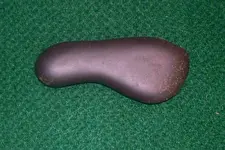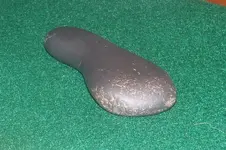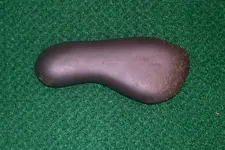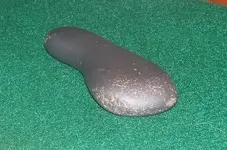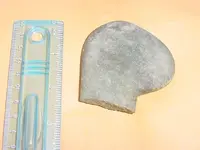Dave in WI
Tenderfoot
Any ideas on material? Black diorite? Slate? I have never seen water bead off a rock like it does this. It doesn't appear that it was hafted, as the majority of the use marks are on the corners as it would when held in hand. Bit end is not tapered like a celt. Found near a tributary of the Milwaukee River in SE WI.
[
[
Amazon Forum Fav 👍
Attachments
Upvote
0



